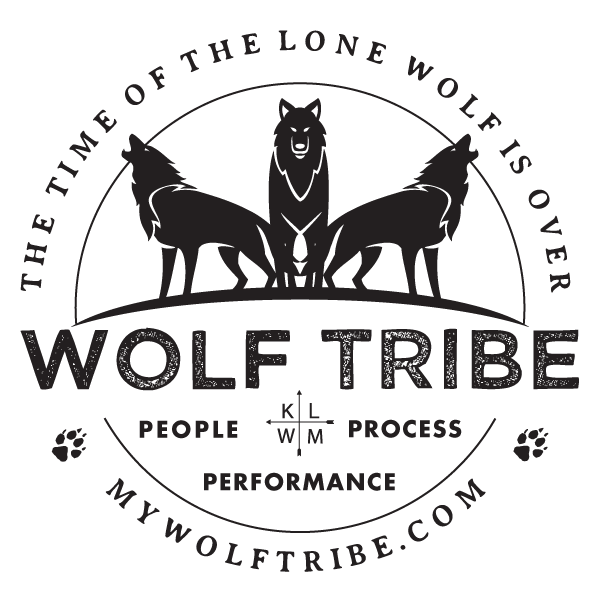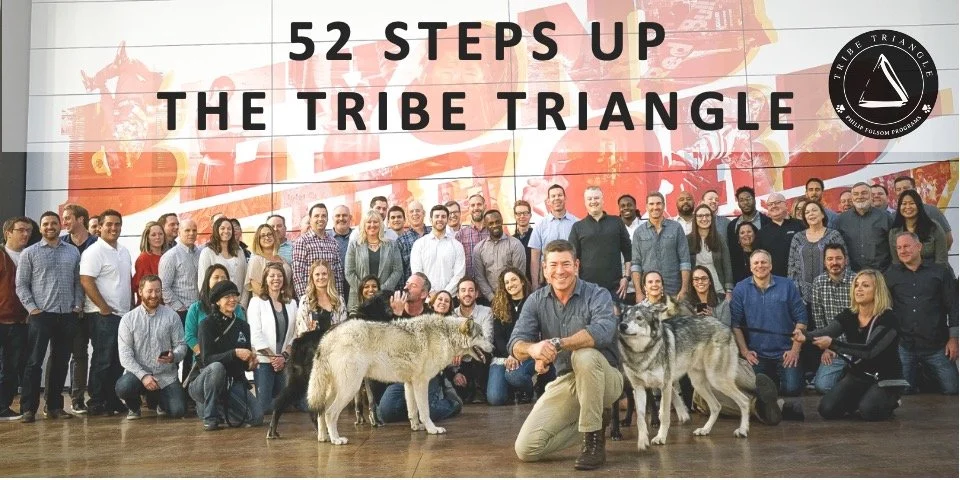Step 39 Up the Tribe Triangle: Reintegration and Returning Home
“Take off the armor; dare to be vulnerable,
dare to unwrap yourself and dare yourself to be yourself.”
-Maria Shriver
The Healthy Conflict phase of the Tribe Triangle is a full commitment to entering the arena of life instead of waiting for some external permission or validation. Whether this is your family relationships, fitness journey or competition in business, this experience is accepting that there will be setbacks, friction and defeats. These hurt.
To enter and survive in the full arena of life we must put on some sort of armor. We explored and discovered versions of this armor in the chapters on Grit, Accountability and Change Management. Kinship is where we built the armor and Healthy Conflict is where we wear it.
For those of us who played team sports or experienced some other form of honor-based culture like the military or first response community, we know that armor well. The armor stops emotions and thoughts from stopping our mission. Tough times create tough people.
Without that personal and cultural armor we will be psychologically and professionally wounded and our journey will end. We cannot successfully and sustainably compete without that armor. Armor limits feeling. This is valuable but also dangerous, especially when we can’t take it off.
When we become gritty and successful people instead of people who are gritty and successful, we have adopted an identity. An identity is a way of being that we adopt that does not require struggle to maintain. It is habitual. This is efficient but also removes the ability to grow adapt. When we adopt an identity of grittiness that is required to compete and survive during struggle, we also become less sensitive, less vulnerable and less empathetic. These leadership skills and tools are vital for living a holistically successful life which requires us to be deeply connected to events and relationships. Transitioning from the struggle of the arena back home is an age-old challenge for the professional.
All athletes and soldiers transitioning from their professional life which defines them, back into the civilian world, know this experience well. Professional athletes play hurt and professional soldiers fight wounded. They can do this because they have embodied the warrior ethos and adopted that warrior identity. To be able to operate at that level in those arenas they have built and put on armor. To be a successful Tribe Leader in the Healthy Conflict phase of your journey, you have too.
Are you an entrepreneur who forges ahead in the face of setback after setback?
Are you a parent relentlessly facing family challenges without quitting?
Are you a manager of a challenging team or in a challenging industry who cannot afford to be vulnerable? If so, you are wearing armor.
“A man who is putting on his armor to go to war
should not boast like a man who is taking it off.”
-African Proverb and Bible
The challenge with adopting the identity of the thick-skinned, armor-wearing realist, is that we must be aware of the times, places and people where the armor is no longer required. We also must know how to take it off.
Are you being strong or are you only numb?
Some of the symptoms of wearing armor in environments where we do not need it is a loss of vitality and passion. Are you actively enjoying sunsets, food and children? Are you filled with active gratitude and are you feeling compassion for yourself and others? Do you laugh and cry? Are the activities that you once found engaging and pleasurable unfulfilling? Are you struggling with addictions or coping mechanisms to function in social settings? Is your sleep suffering?
“To love, we must remove our armor, exposing our heart.
For love cannot be had without the risk of being wounded.”
-John Mark Green
There are a host of best practices for the vital transition from struggle to vulnerability. Some of the best practices are battle-tested reintegration rituals from warrior cultures of every era.
When it was time to come home, the medieval knights would ritually take off their armor and weapons. This would usually happen in the church where the battle-weary warrior would say the rosary and walk the church labyrinth in only a robe. These knights would also engage with intentionally vulnerable and humble acts such as pilgrimages and writing love letters.
The samurai from medieval Japan had similar reintegration rituals that included engaging in the inherently peaceful acts of calligraphy, pottery and flower arranging.
Establish your own reintegration ritual so when you return home from the challenges of your day, you can take off your armor and reconnect with the fullness of your life. Walk the dog, take your shoes off and walk on the earth. Purify yourself from the debris of your battles with a shower. Turn off your phone and don’t check your email until tomorrow. Somehow the world will continue to turn without you managing it.
“How do people like us take off our armor? One piece at a time.”
-Holly Black
We need to learn to understand and behave without the reference point of our own power and security. If we don’t, we will lose connection from our people and the purpose of our vision as well as ourselves.
You deserve this.
Your people and projects demand it.
Click here To watch the video of Step 39: Reintegration and Returning Home
Leaders Must Write and Speak
Answer these questions in your journal by really writing them down. Discuss them with at least one of your most important people and really listen to their response.
What is the armor you put on to survive the challenges of your day? When do you have to ‘not care about what people think about you’? When do you ‘soldier on’ when inside you are scared, insecure or disappointed?
What is a reintegration ritual that you will enact after work so you don’t bring the battle home?
Ubuntu,
Philip Folsom








